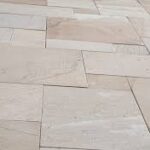The kitchen is often the heart of the home, a space where daily activities like cooking, cleaning, and family gatherings occur. However, it’s also one of the most vulnerable areas for water damage due to the constant presence of water lines, sinks, dishwashers, and other appliances. Preventing water damage in your kitchen is crucial to maintaining both the functionality and value of your home.
In this article, we’ll explore practical tips to help you safeguard your kitchen from water damage and avoid costly repairs or the need for water damage restoration.
1. Regularly Inspect Pipes and Faucets
Pipes and faucets are prone to leaks over time, especially as they age or due to changes in water pressure. Regularly inspect the pipes under your sink, behind your dishwasher, and those connected to your refrigerator’s water line. Look for any signs of drips, corrosion, or water stains that could indicate a hidden leak.
Fixing minor leaks promptly can prevent bigger problems down the road, including significant water damage and costly repairs.
2. Check Appliances for Leaks
Kitchen appliances like dishwashers, refrigerators with ice makers, and washing machines are common sources of water leaks. Over time, the hoses or connections can wear out, leading to slow leaks or bursts. Make it a habit to check these appliances for any signs of moisture around their base or behind them. If any leaks are detected, replace the faulty hoses or call in a professional to repair them.
3. Install a Water Leak Detection System
A water leak detection system is a smart investment for any kitchen. These devices can detect moisture levels or water leaks and send alerts to your phone or alarm system, giving you time to react before serious damage occurs. Some advanced systems can automatically shut off the water supply when a leak is detected, preventing widespread damage.
4. Use a Water Heater Pan
If your water heater is located in or near your kitchen, consider placing a water heater pan underneath it. These pans are designed to catch leaking water in case the water heater malfunctions. Over time, water heaters can rust or crack, leading to water damage. A pan can provide a simple, cost-effective line of defense.
5. Maintain Your Sink and Drainage System
A clogged kitchen sink can lead to overflowing water and significant damage to cabinets, flooring, and surrounding areas. To prevent water damage, make sure your sink’s drainage system is functioning properly. Avoid pouring grease, oil, or food scraps down the drain, as these substances can clog pipes over time. Regularly clean out your garbage disposal and consider using a drain cover to catch large particles that could cause blockages.
6. Seal Gaps Around the Sink and Countertop
Water can easily seep into small gaps between your sink and countertop, leading to water damage in your cabinets and underneath the countertop. Ensure that the area around your sink is properly sealed with caulking. If you notice any cracks or deterioration in the sealant, reapply it to prevent water from seeping through.
7. Address Tile Grout and Caulking
In kitchens with tiled countertops or backsplashes, worn-out grout or caulking can allow water to penetrate the surface, leading to hidden damage. Routinely inspect the grout between tiles and reapply it if necessary. The same goes for caulking around sinks, faucets, or windows, where moisture tends to accumulate.
8. Control Humidity Levels
High humidity in the kitchen can lead to condensation, which over time may cause water damage to walls, ceilings, and cabinets. Use a kitchen exhaust fan when cooking to reduce moisture in the air. If you live in a particularly humid area, consider using a dehumidifier in your kitchen to keep humidity levels under control.
9. Know Where the Main Water Shut-Off Valve Is
In the event of a major water leak, knowing how to quickly shut off your water supply is crucial. Familiarize yourself with the location of your home’s main water shut-off valve and ensure that all family members know how to operate it in an emergency. Acting quickly can significantly reduce the amount of water damage and may eliminate the need for extensive water damage restoration.
10. Schedule Regular Plumbing Maintenance
Even with the best preventive measures, plumbing issues can still arise over time. Scheduling regular inspections with a professional plumber can help catch potential problems before they lead to water damage. A professional plumber can also inspect areas that might be hard to access or difficult to spot for the average homeowner.



